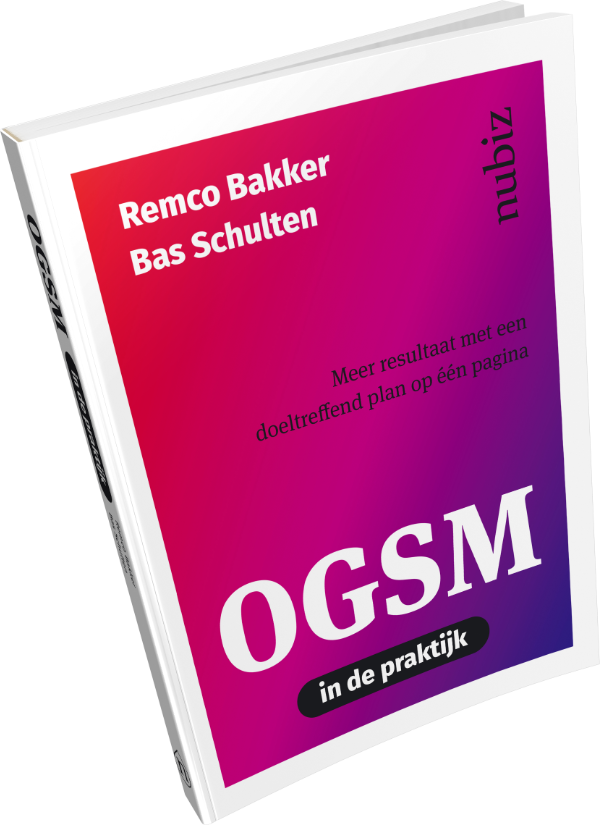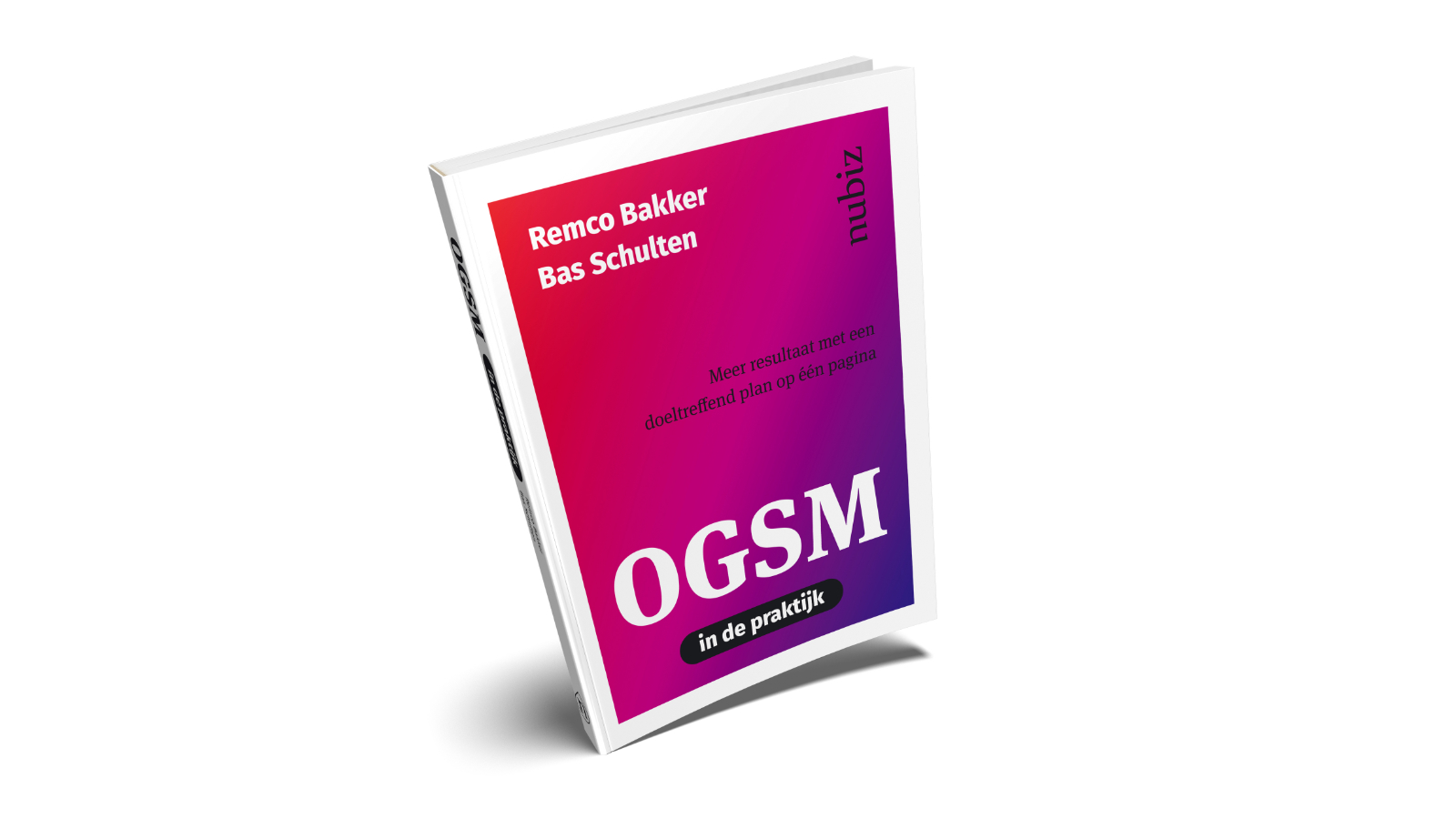Division of roles: tasks and responsibilities
When describing the responsibilities of the team members, we distinguish between the content and the process. The content consists of the parts of the OGSM, from the objective to the actions. We distinguish four roles for the content:
- OGSM owner: Final responsibility for the results of the OGSM.
- Strategy owner: Final responsibility for the proper completion of the actions within the strategy and responsible for the results and reporting on them.
- Action owner: Responsible for carrying out the action and reporting on progress.
- Team member: Discusses the progress of actions and strategies and makes decisions about changes. Authorized to address owners on progress and results.
In addition, people from outside the team can be involved in the content. The process concerns the steps you take to create an OGSM and to run and monitor it. For the responsibility of the process we distinguish the fifth role:
- Process owner: Responsible for the process of doing, learning and adjusting.
In the book 'OGSM in practice' you will find an overview of the responsibilities, tasks and authorities of all team roles.

Making choices in three steps
In a good team, the team members work together optimally towards their common goals. That is why the objective and goals in an OGSM are so powerful. Every choice that is made is aimed at (ultimately) realizing the objective and goals. Which strategies should we make? What actions are we going to take and what not? Which actions do we prioritize? How can we improve the implementation of the actions? Should we adjust our action plan? And so we can go on and on. You always have to choose.
The success of a team is largely determined by the extent to which the members are able to make the right choices. You do this in three steps:
- Imaging: Create a clear and honest picture of the situation. Use the LSD technique: Listen, Summarize, Probe.
- Judgment formation: Bring different perspectives together and weigh the options. Be positively critical of each other.
- Decision: Any decision is better than no decision. You can make decisions by seeking consensus. That leads to the most support, but watch out for compromises instead of choices. You can also vote, the procedure is clear, but make sure that the voice of the minority is also heard. And sometimes the leader has to make a decision. In any case, make sure that everyone's ideas are heard and taken seriously. This increases the chance that everyone will support the final choice, even if it was not their first choice. And always keep the common goal in mind, because every choice must contribute to it.

OGSM in practice
This article is a summary of a chapter of the book 'OGSM in practice'. More information can be found at ogsmindepraktijk.nl
Or order the book directly from management book of bol.com.
Stay Informed
Register for the newsletter “OGSM in practice” and receive monthly new inspiration about working with OGSM.



